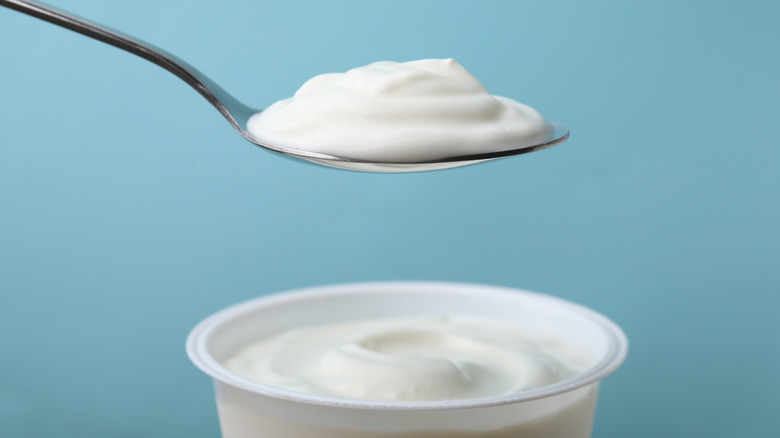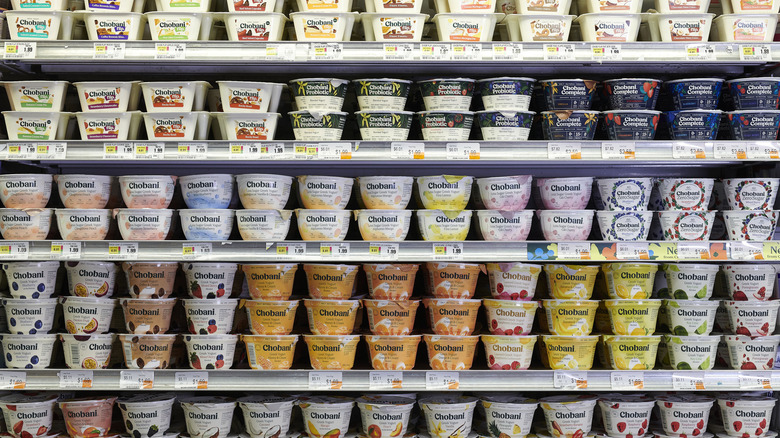Why Everyone Once Believed The Fountain Of Youth Was Full Of Yogurt
Imagine if the key to living forever wasn't some mythical fountain, or a high-tech anti-aging serum that costs hundreds for a tiny bottle. Instead, picture something much simpler: yogurt. Sounds ridiculous, right? Well, not too long ago, people genuinely believed that a daily dose of fermented dairy could stave off the aging process and keep them youthful forever. And it all started with one scientist.
In 1904, a Bulgarian scientist named Élie Metchnikoff, a researcher who would go on to win a Nobel Prize, made an announcement that would spark a global dairy-based craze – and it wasn't to do with how long store-bought yogurt can stay in the fridge without it going bad. He had observed that Bulgarian villagers, who regularly consumed yogurt, lived exceptionally long lives. His theory? The bacteria present in yogurt could fight aging and disease, prolonging life far beyond what was considered normal at the time. And because Metchnikoff was a respected scientist, people took him seriously.
Suddenly, yogurt wasn't just food; it was the ticket to a longer life. But like all food fads, the hype didn't last forever. So how did the dairy product go from a health miracle to a forgotten trend, before a surprising comeback decades later?
The rise and fall of yogurt as the fountain of youth
Élie Metchnikoff's yogurt theory quickly spread across Europe and America, leading to a rise in consumption. His research caused people to believe that it was possible to live to well over 100 years old, perhaps even 150. And medical professionals began to take sour milk seriously as a cure for all kinds of ailments.
In terms of its ability to help people live longer, reality set in when Metchnikoff passed away in 1916 at 71 – a respectable age, but far from the yogurt-induced immortality expected. Interest in yogurt's supposed anti-aging properties waned. Without the scientist himself to champion the cause, people moved on, and for a while the idea of eating yogurt for its good bacteria took a backseat.
Even when Danone created its first yogurt in 1919, it had a rather niche medical angle, being aimed at children with digestive disorders. But some years later, the dairy product would once again be in the spotlight, and experience a new burst of mainstream popularity.
The hippie revival and yogurt's permanent place in America
Just when it seemed like yogurt would fade into obscurity once and for all, the hippie movement of the 1960s gave it new life. Yogurt's benefits were rediscovered and embraced by counterculture food enthusiasts, particularly those advocating for a more natural way of eating.
By the 1970s, yogurt started to become mainstream once again with the launch of brands like Nancy's Yogurt. And in the coming years, the focus wasn't on eternal youth like in previous decades; it was on gut health, and taste. People loved the new flavors and varieties available, and yogurt cemented itself as a permanent part of the American diet. Food companies began talking about the benefits of probiotics. And Americans fell in love with yogurt all over again, turning it from a niche health food into a household staple.
Today, we may not be eating yogurt in pursuit of immortality, but we have found plenty of new uses for it. From trendy Greek yogurt bowls to unexpected hacks like adding yogurt to boxed mac and cheese, it's safe to say that yogurt isn't going anywhere. You can even make yogurt in your slow cooker so you always have a fresh supply. And while it may not keep you young forever, at least it tastes great.


